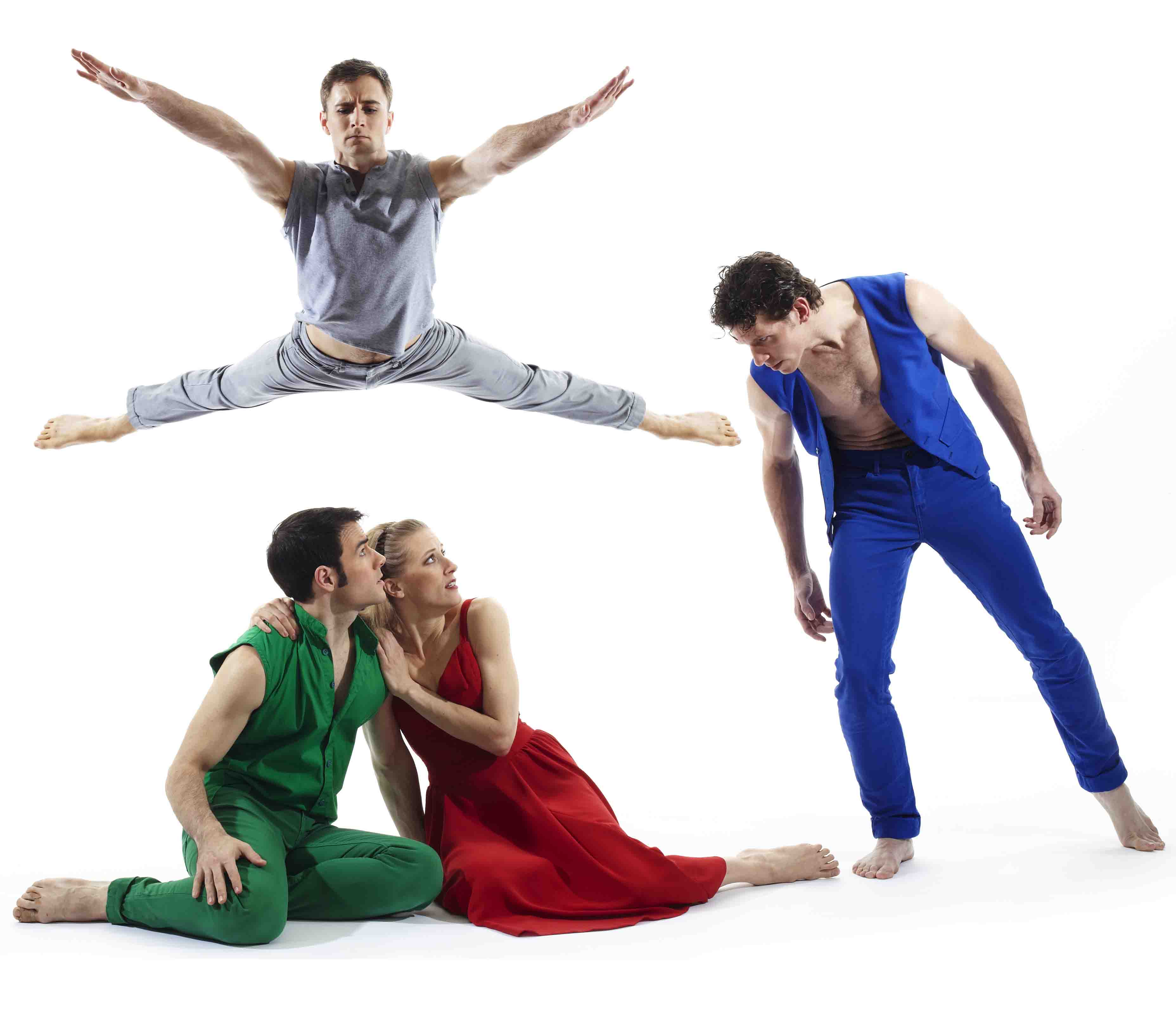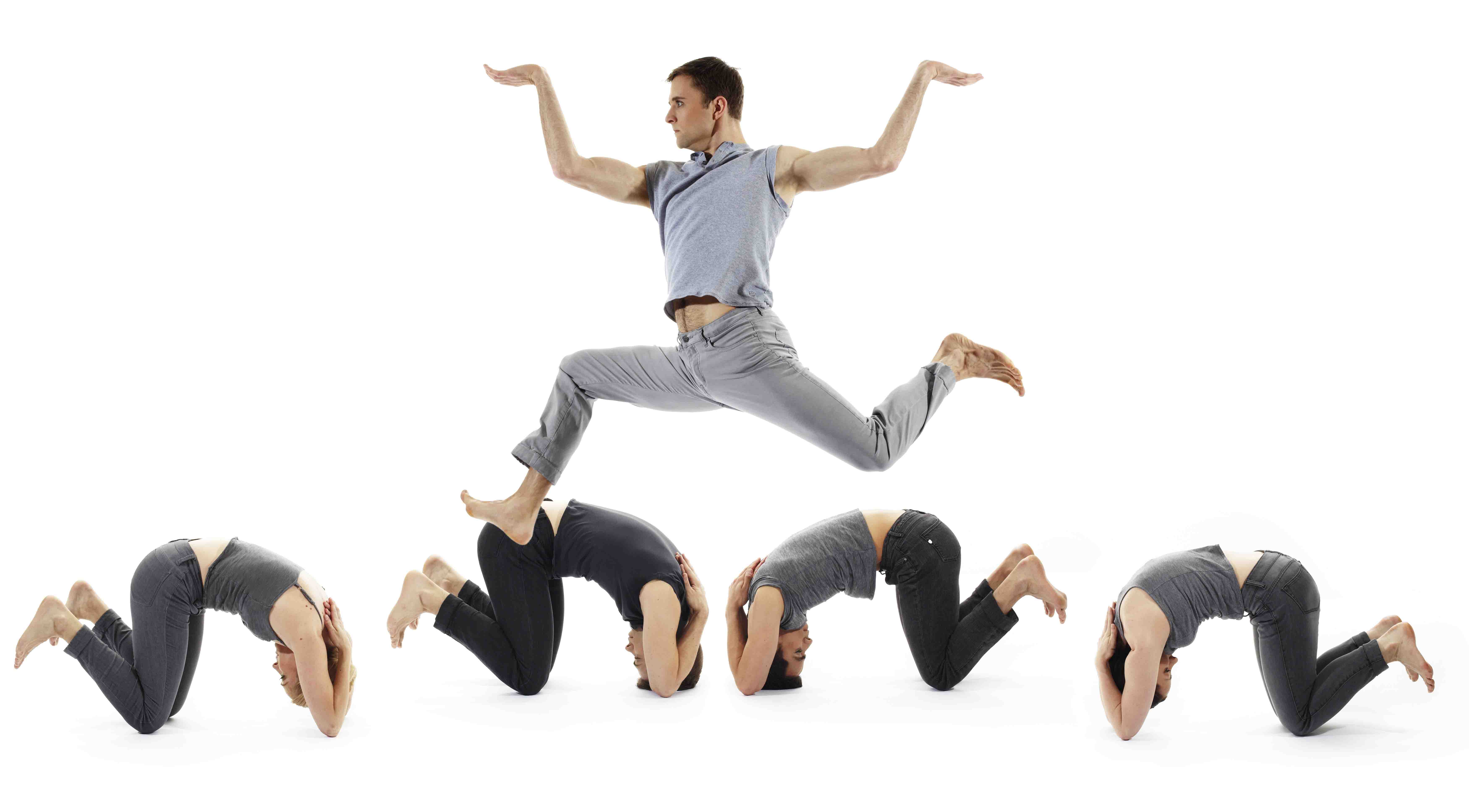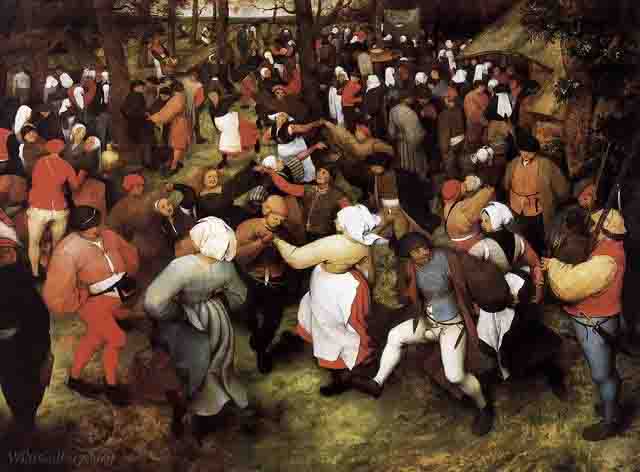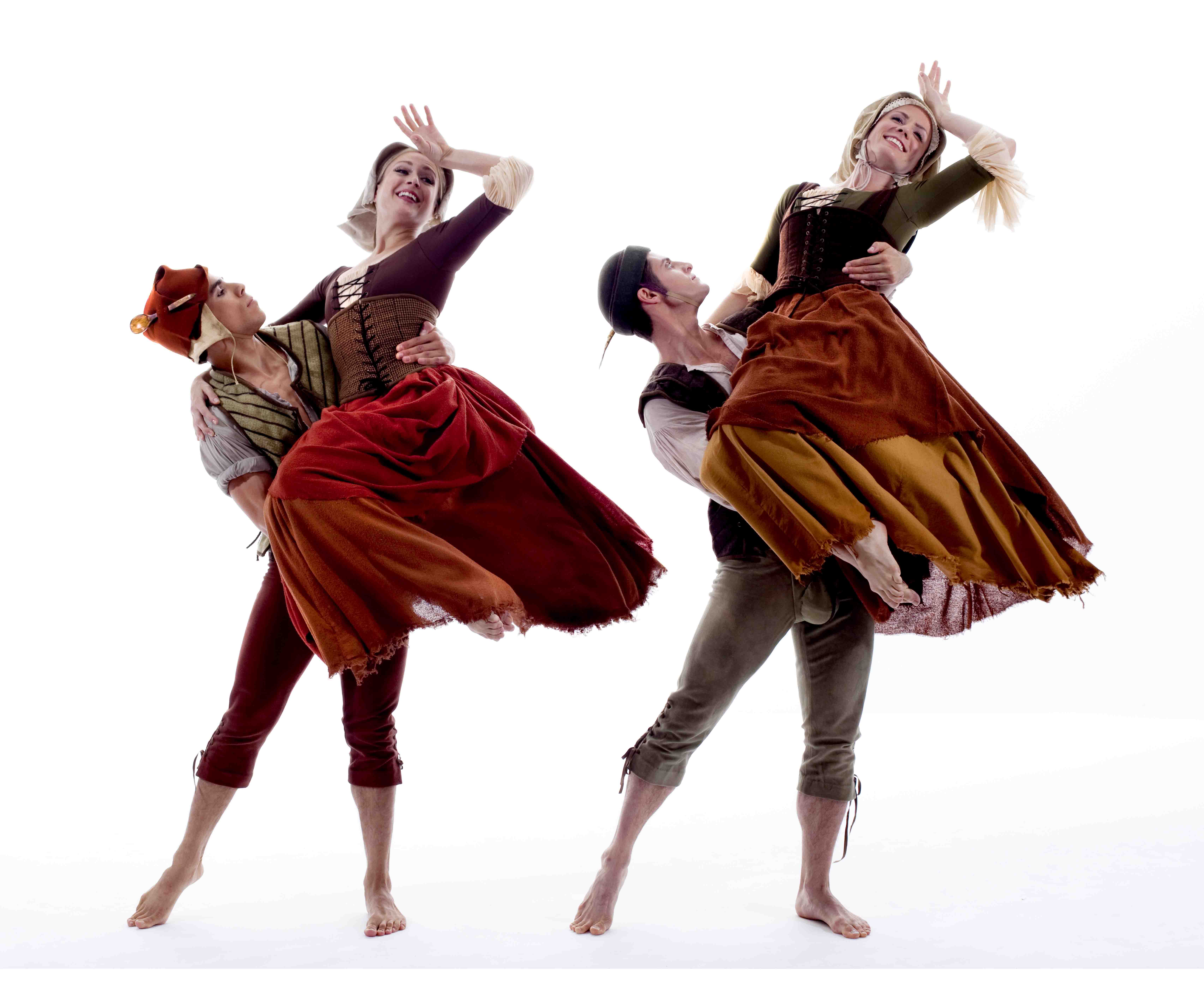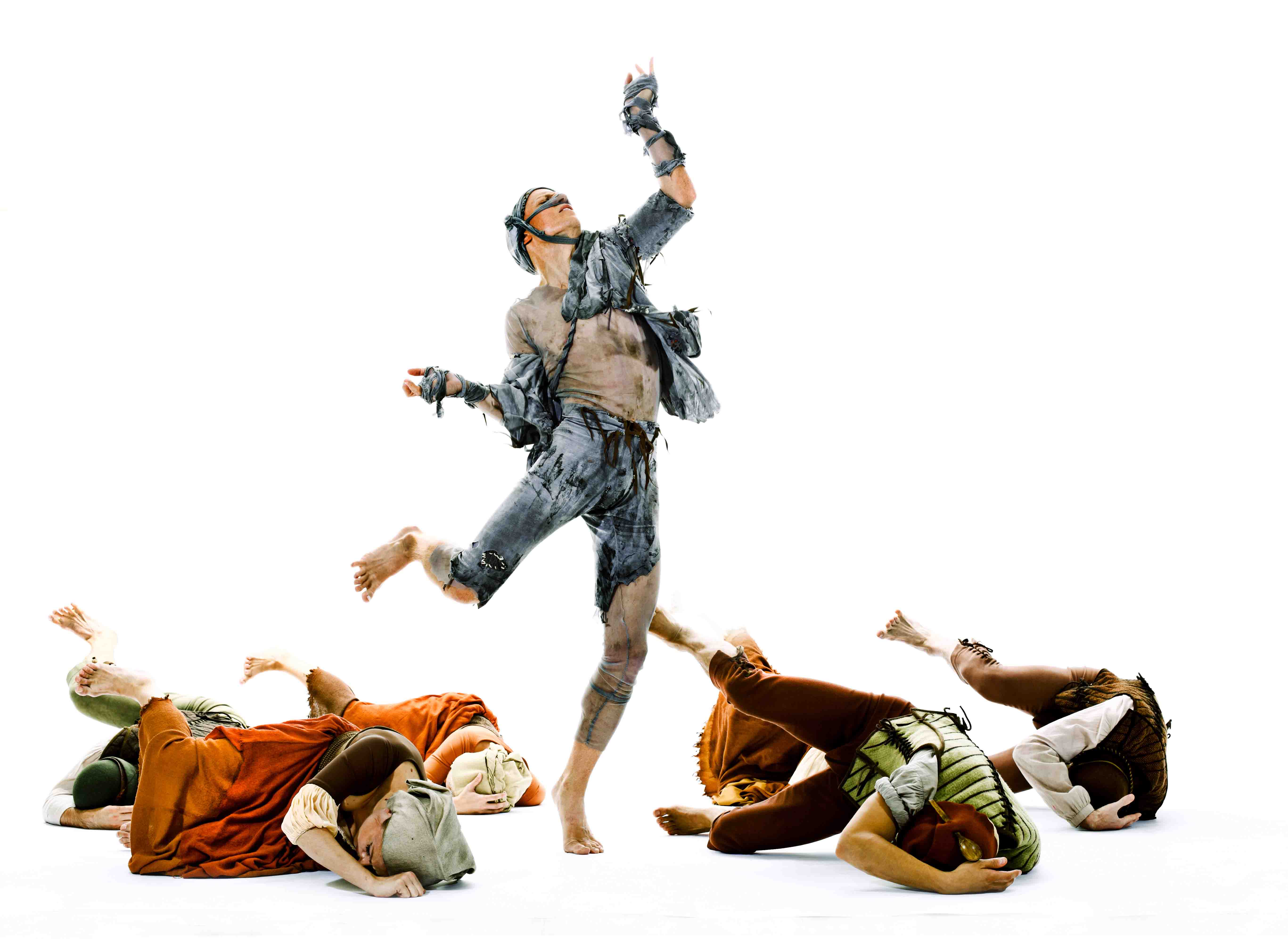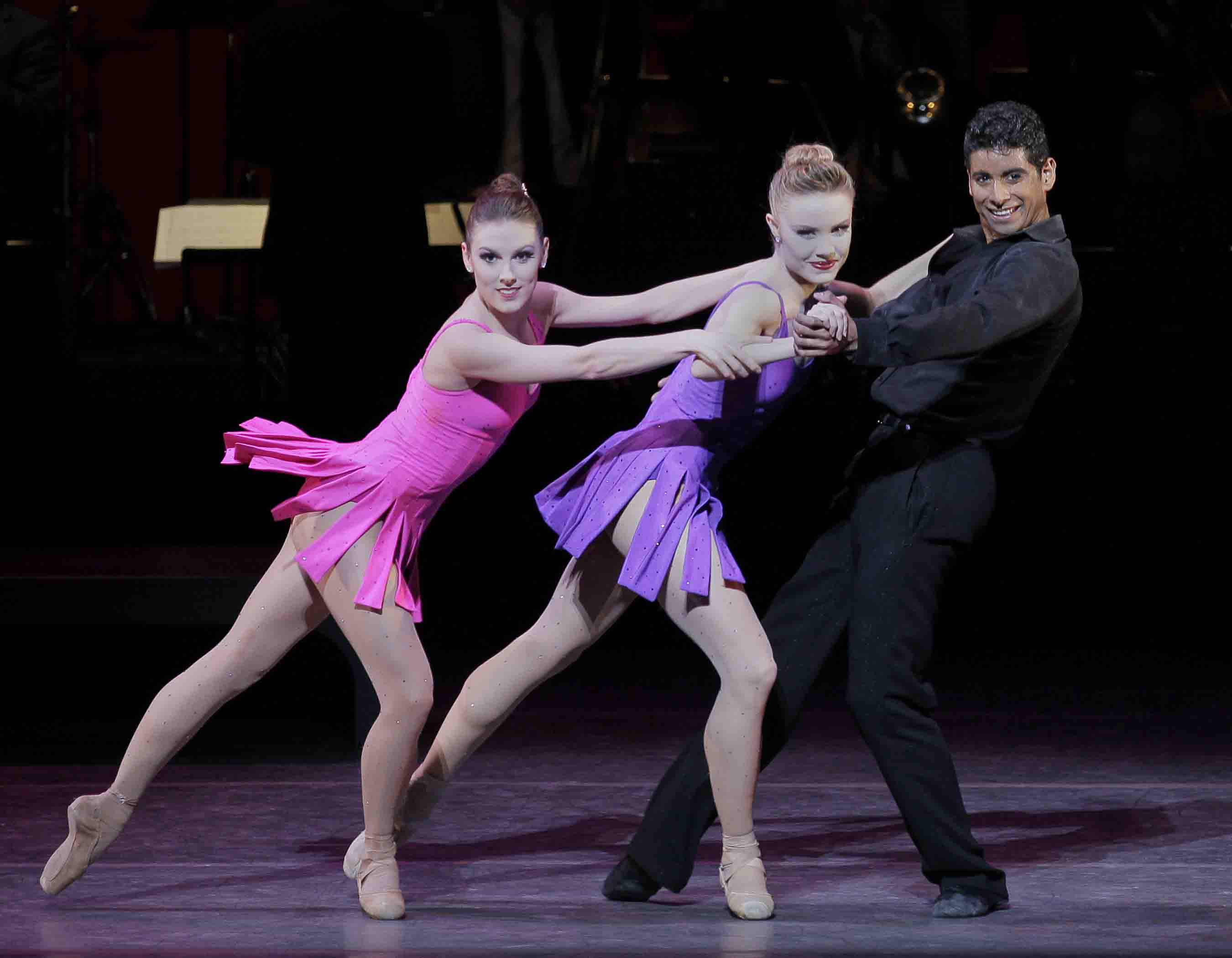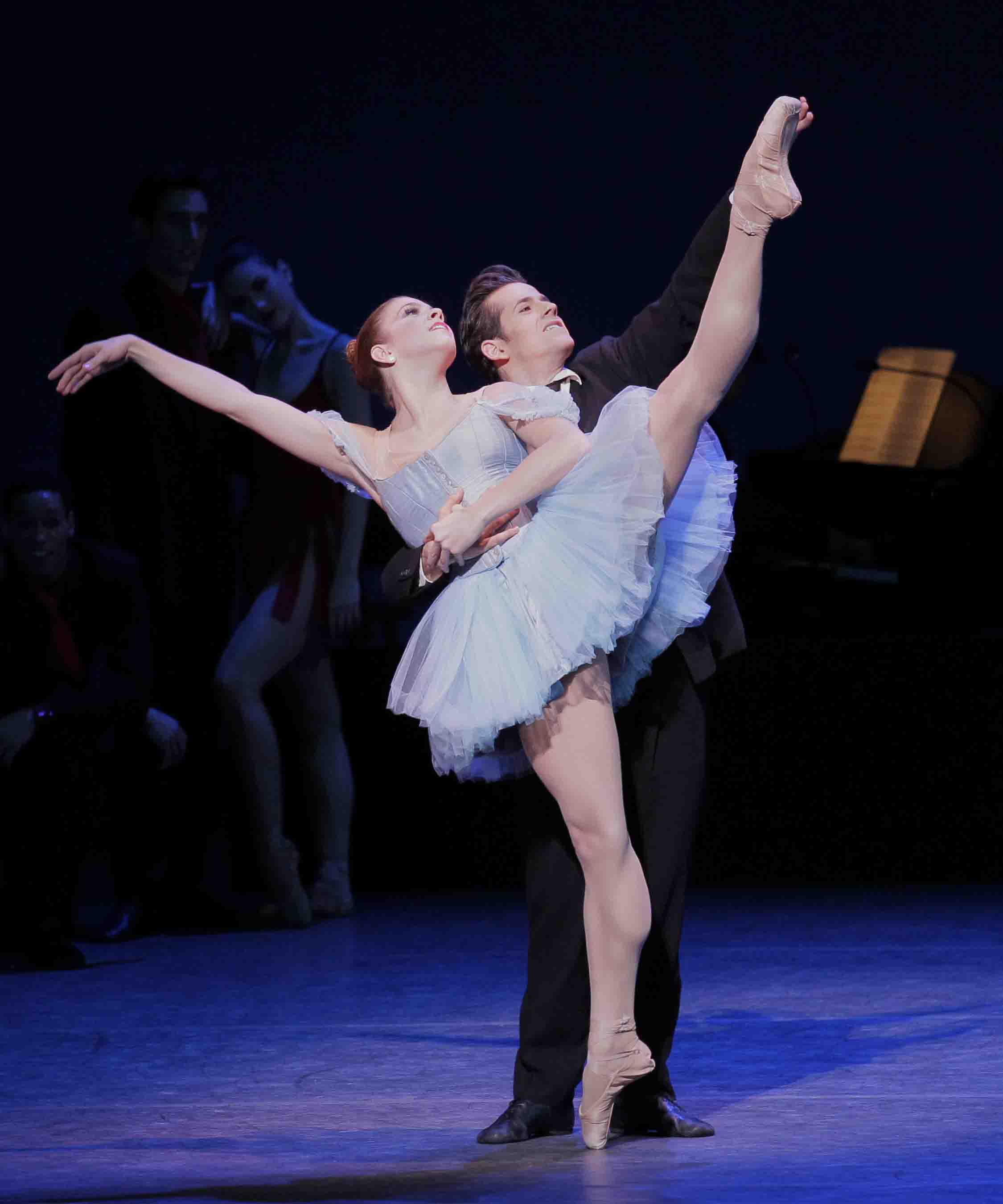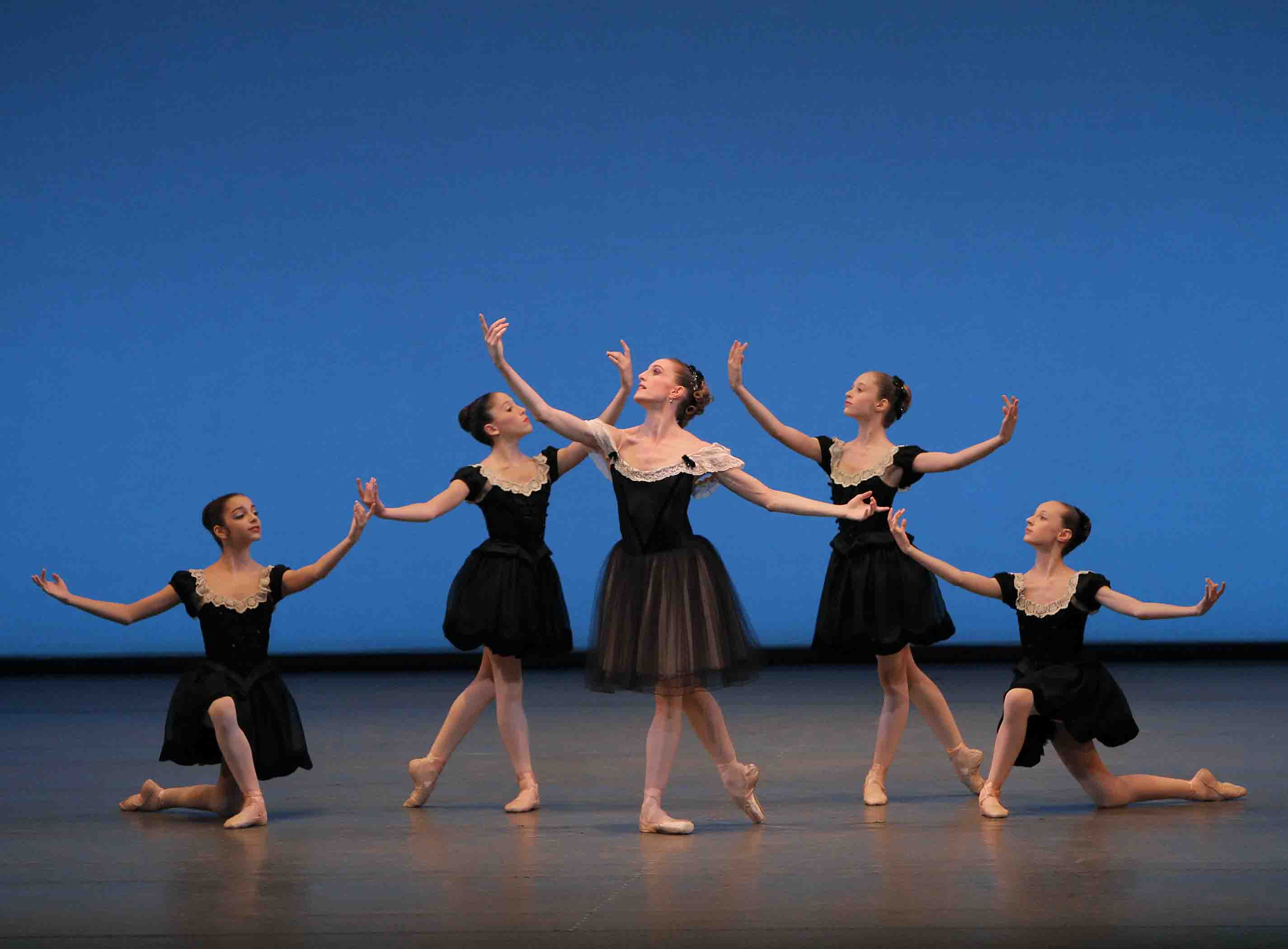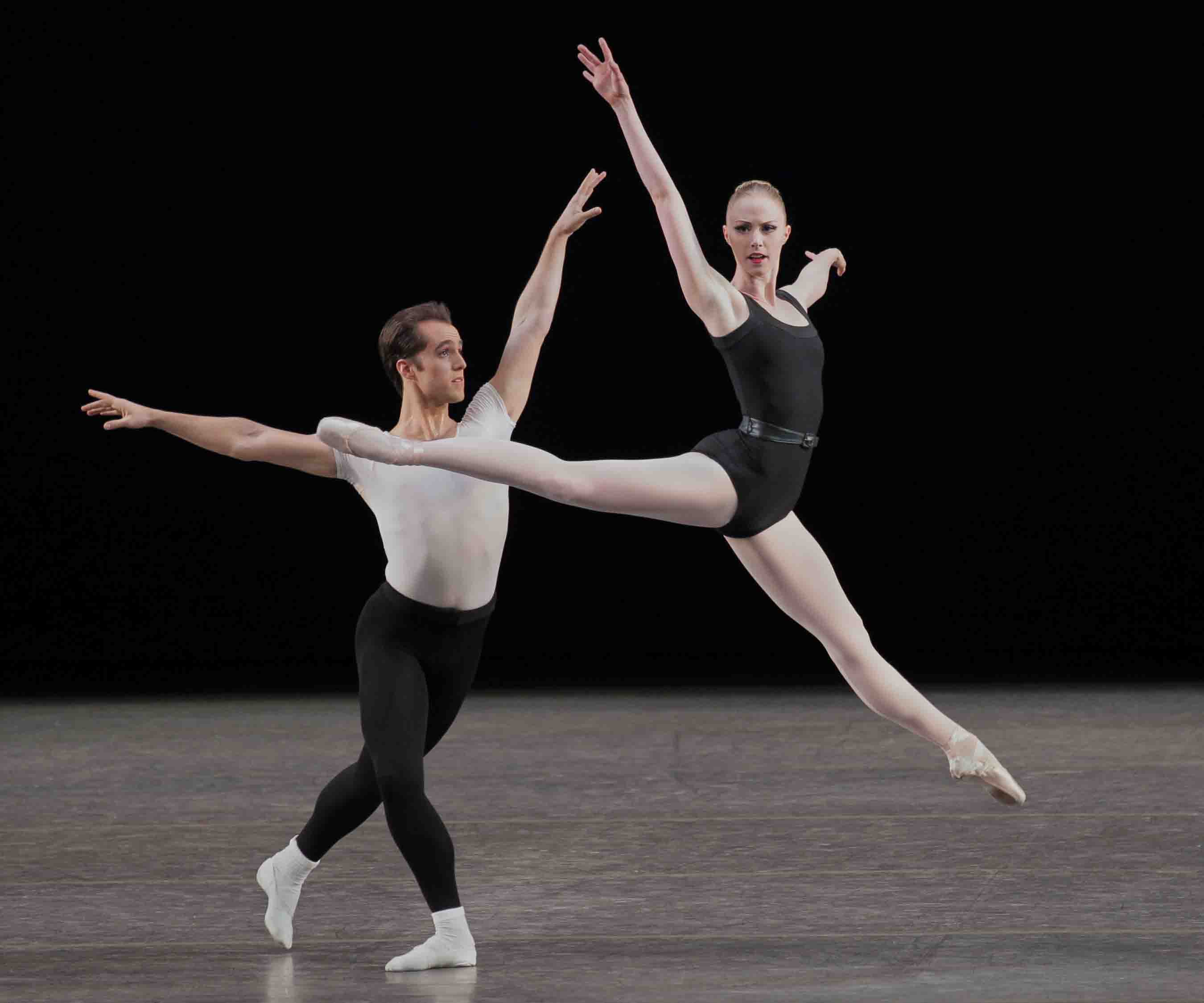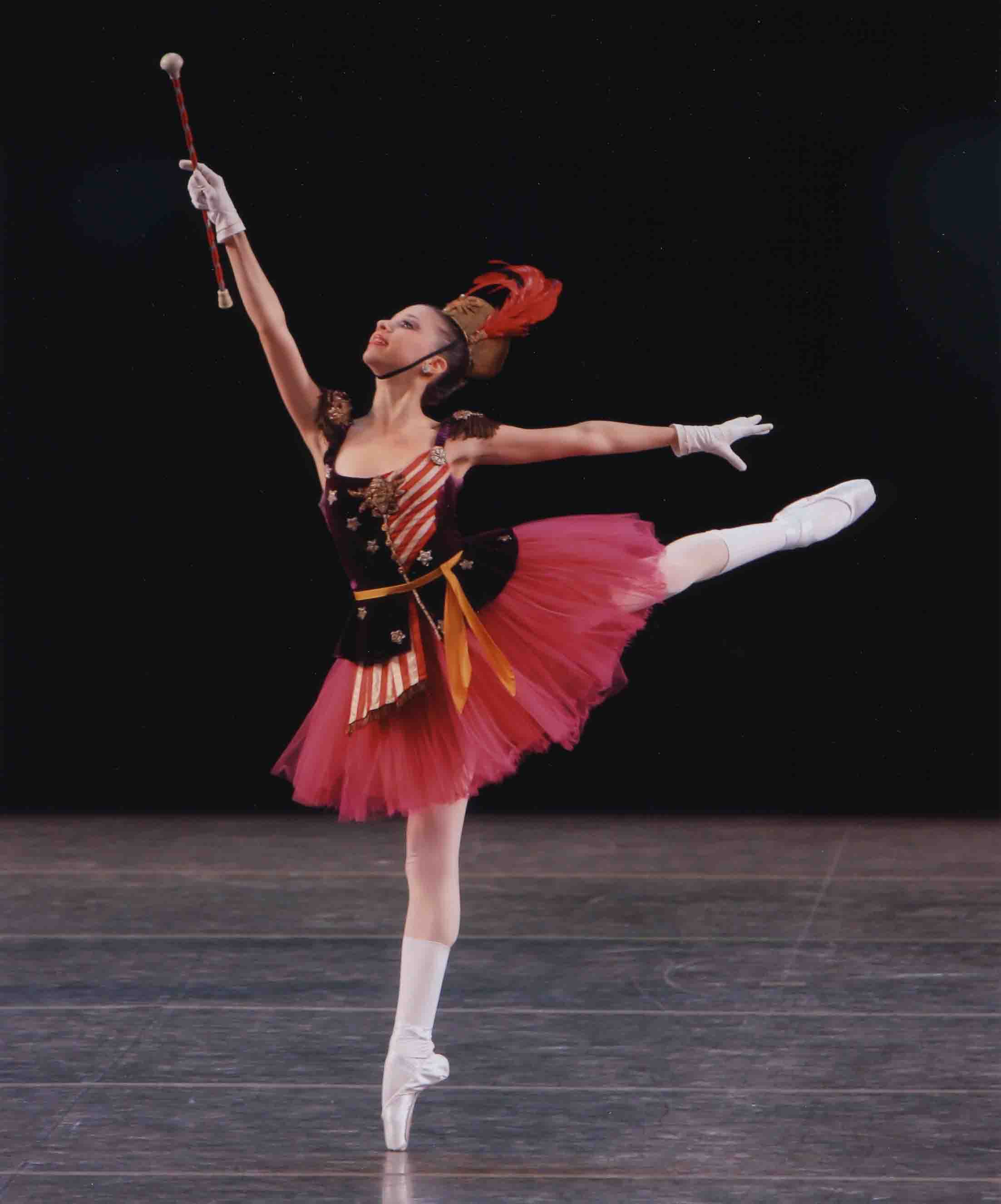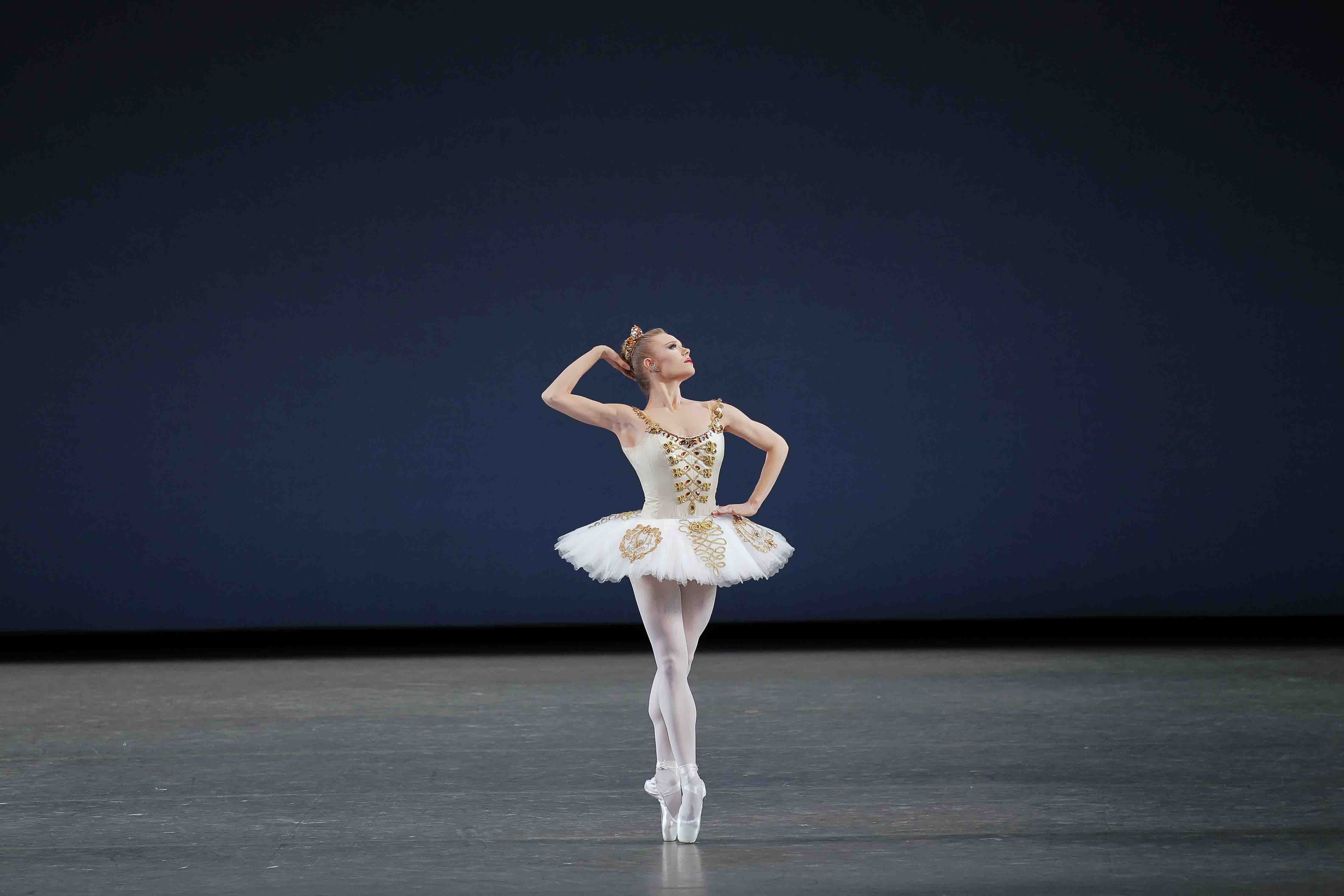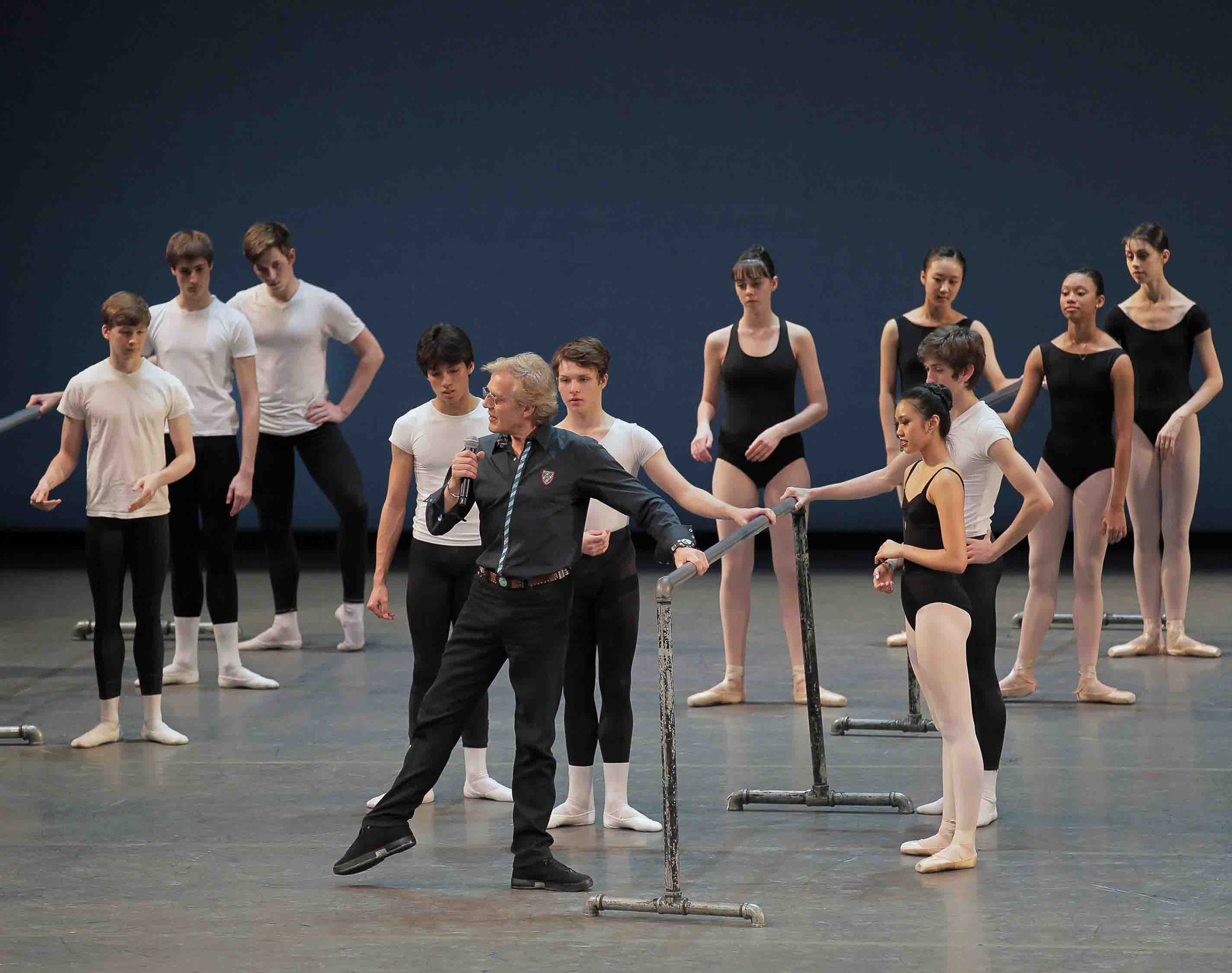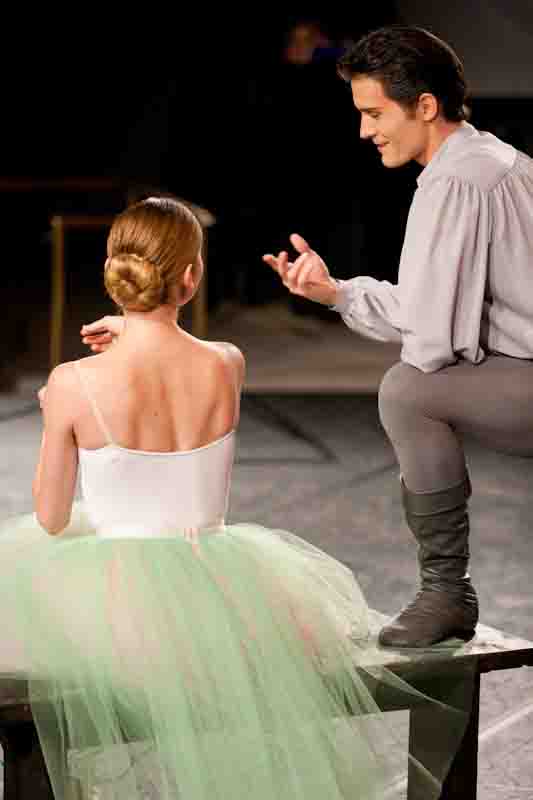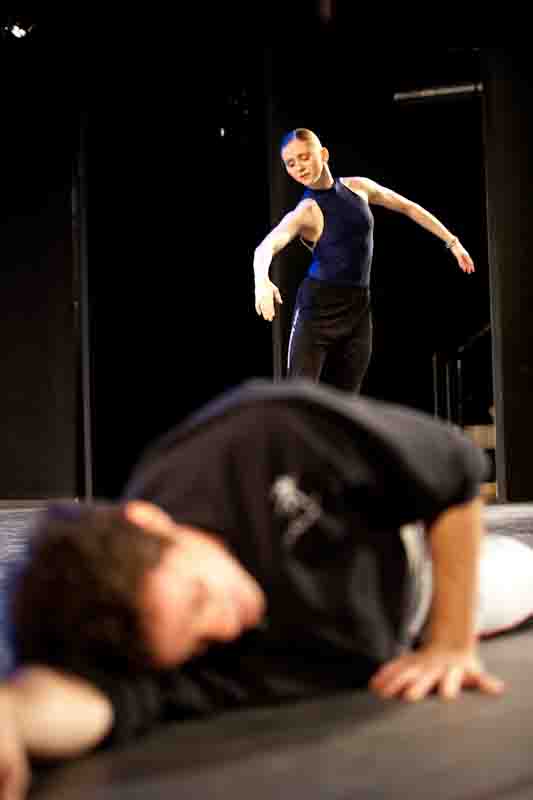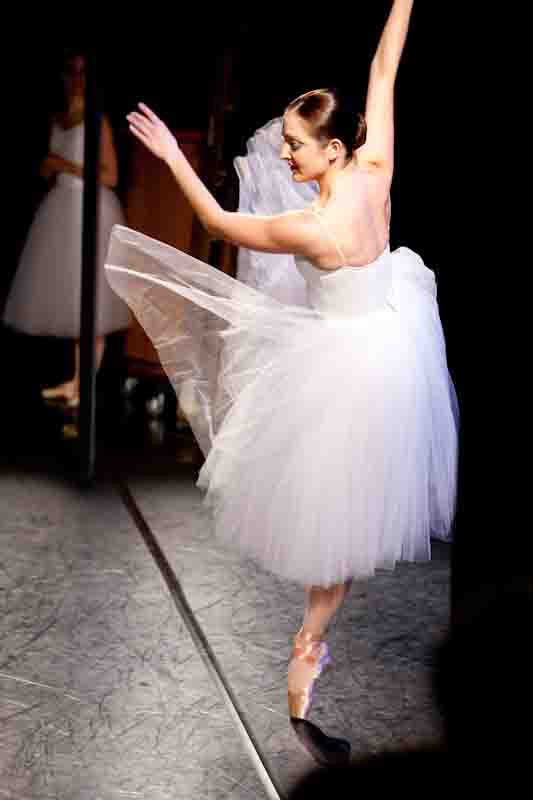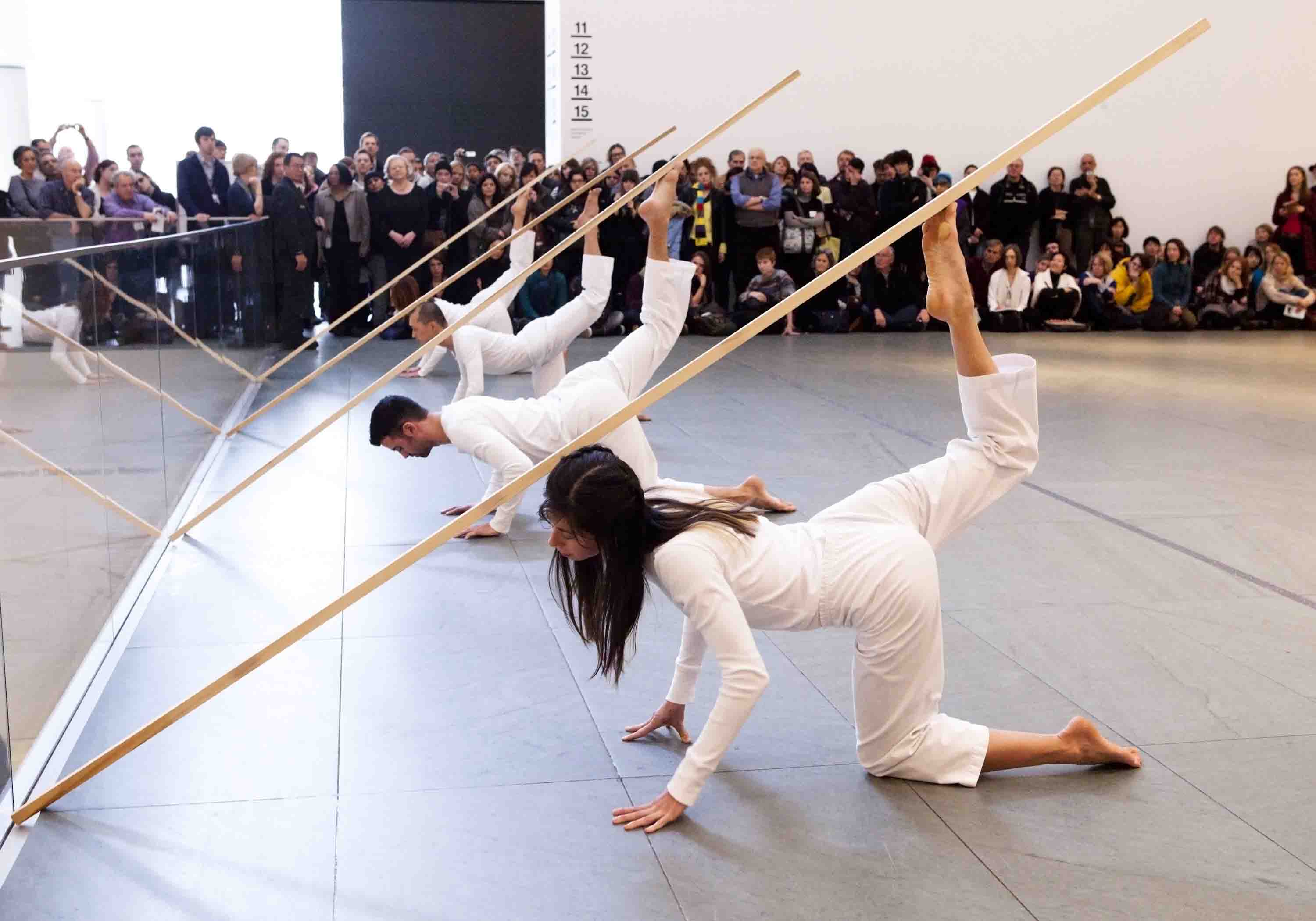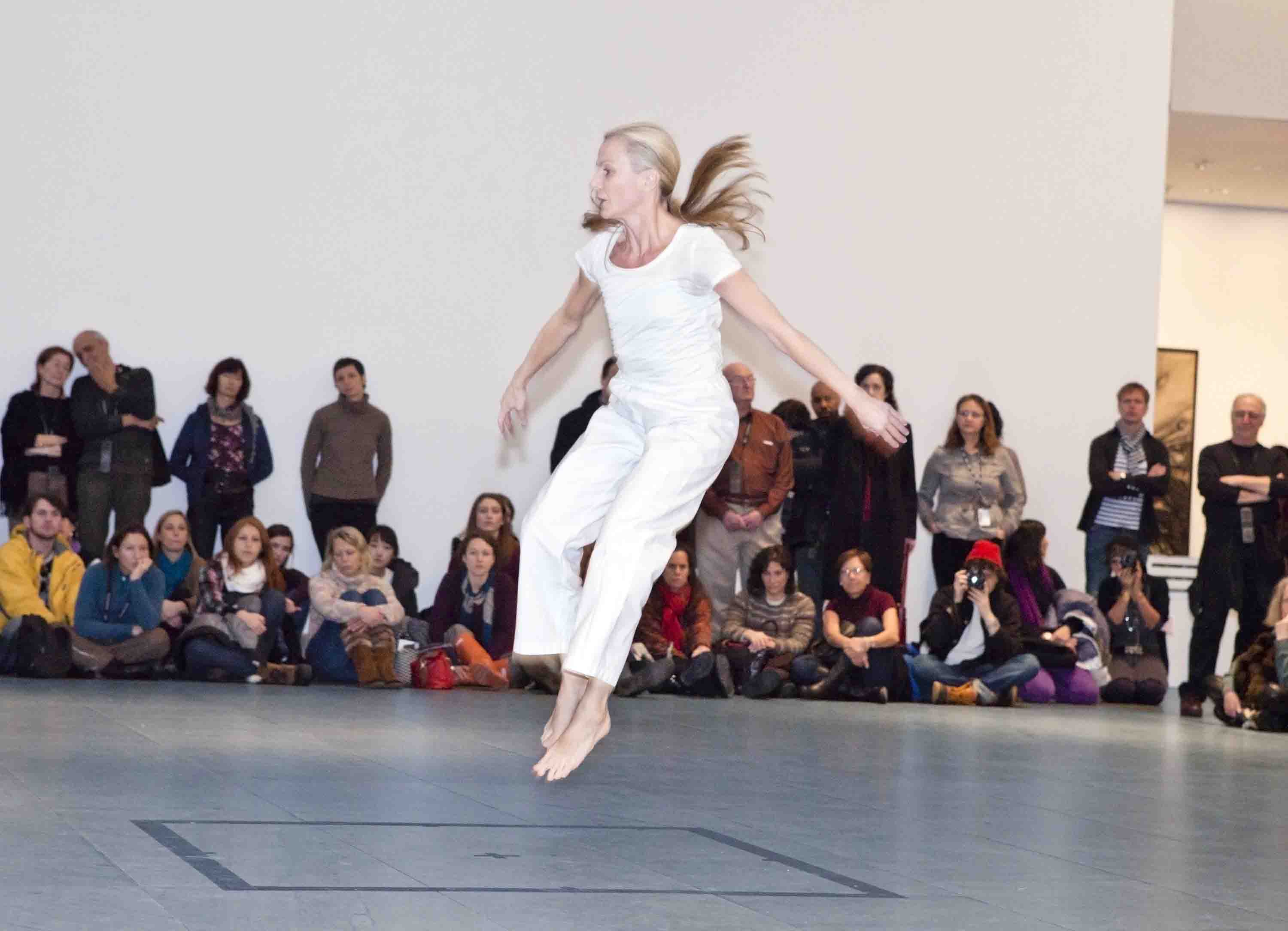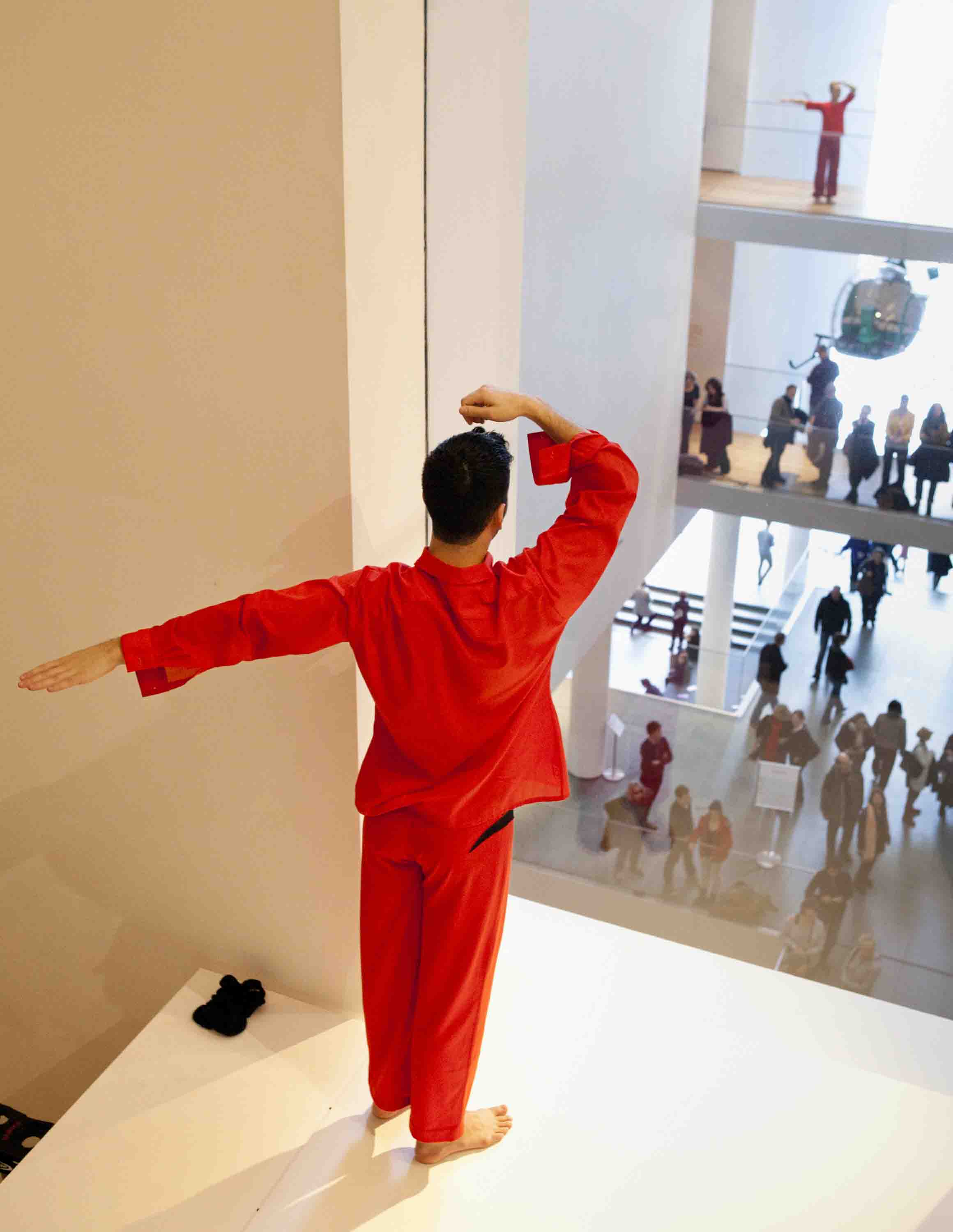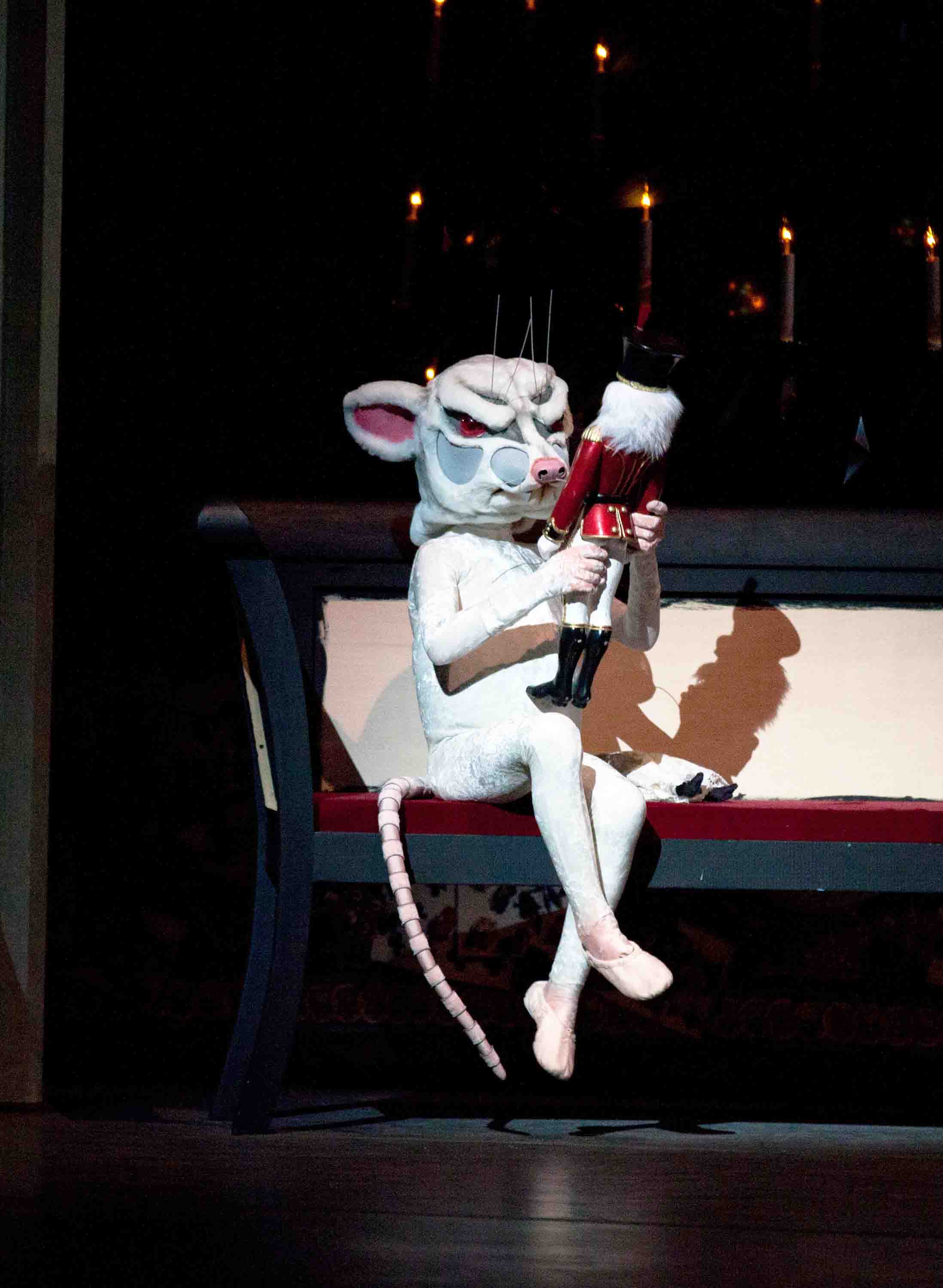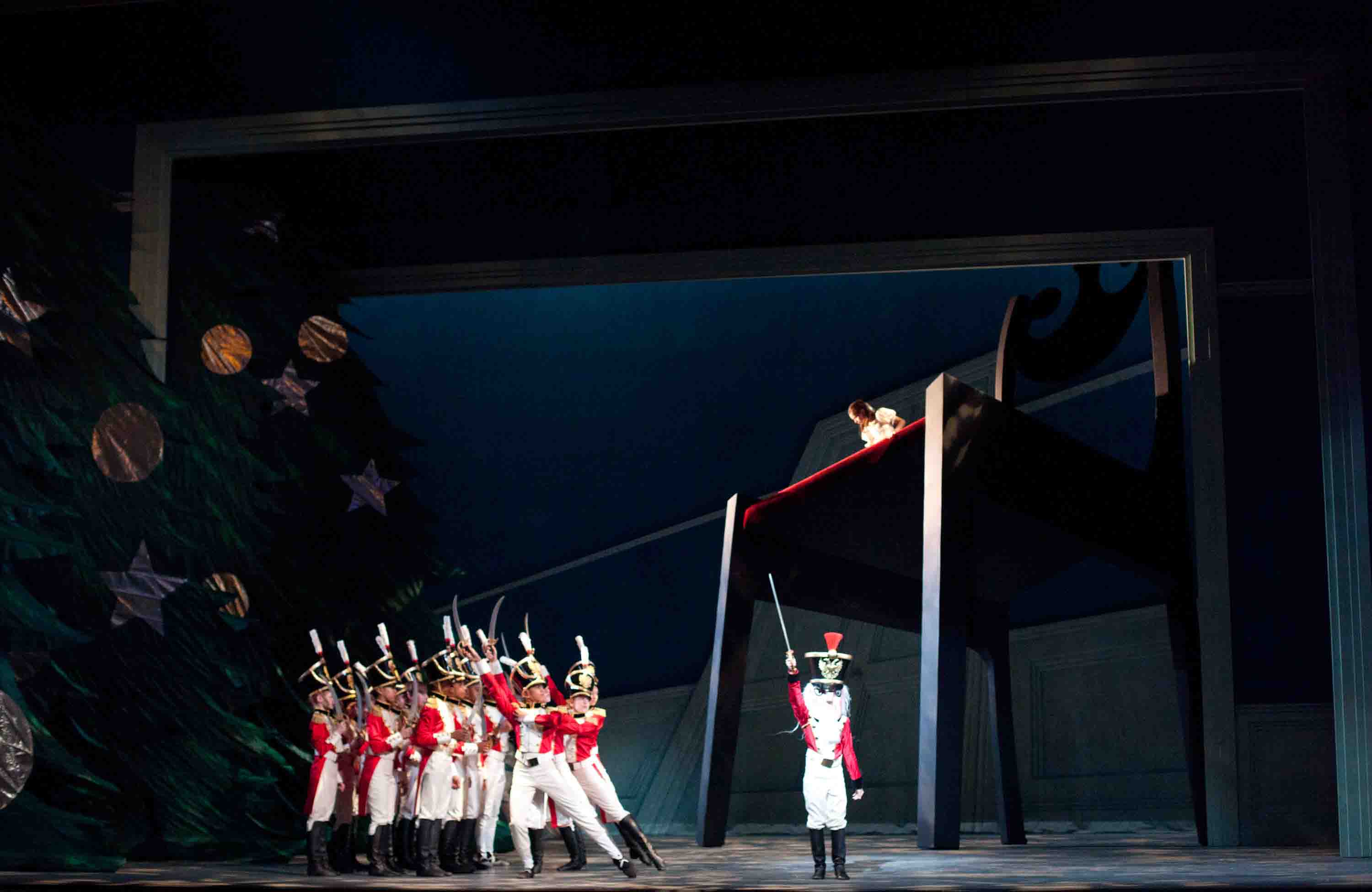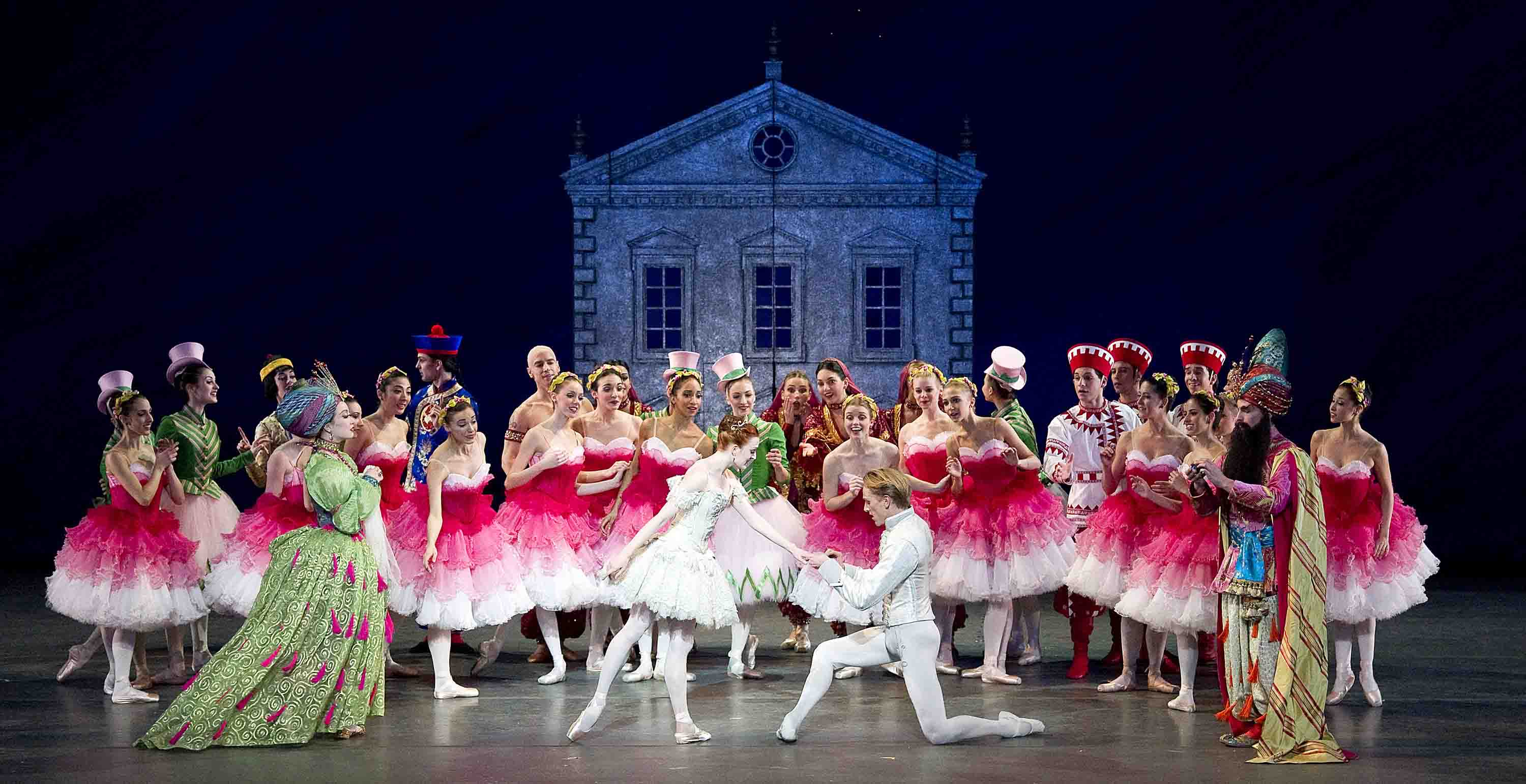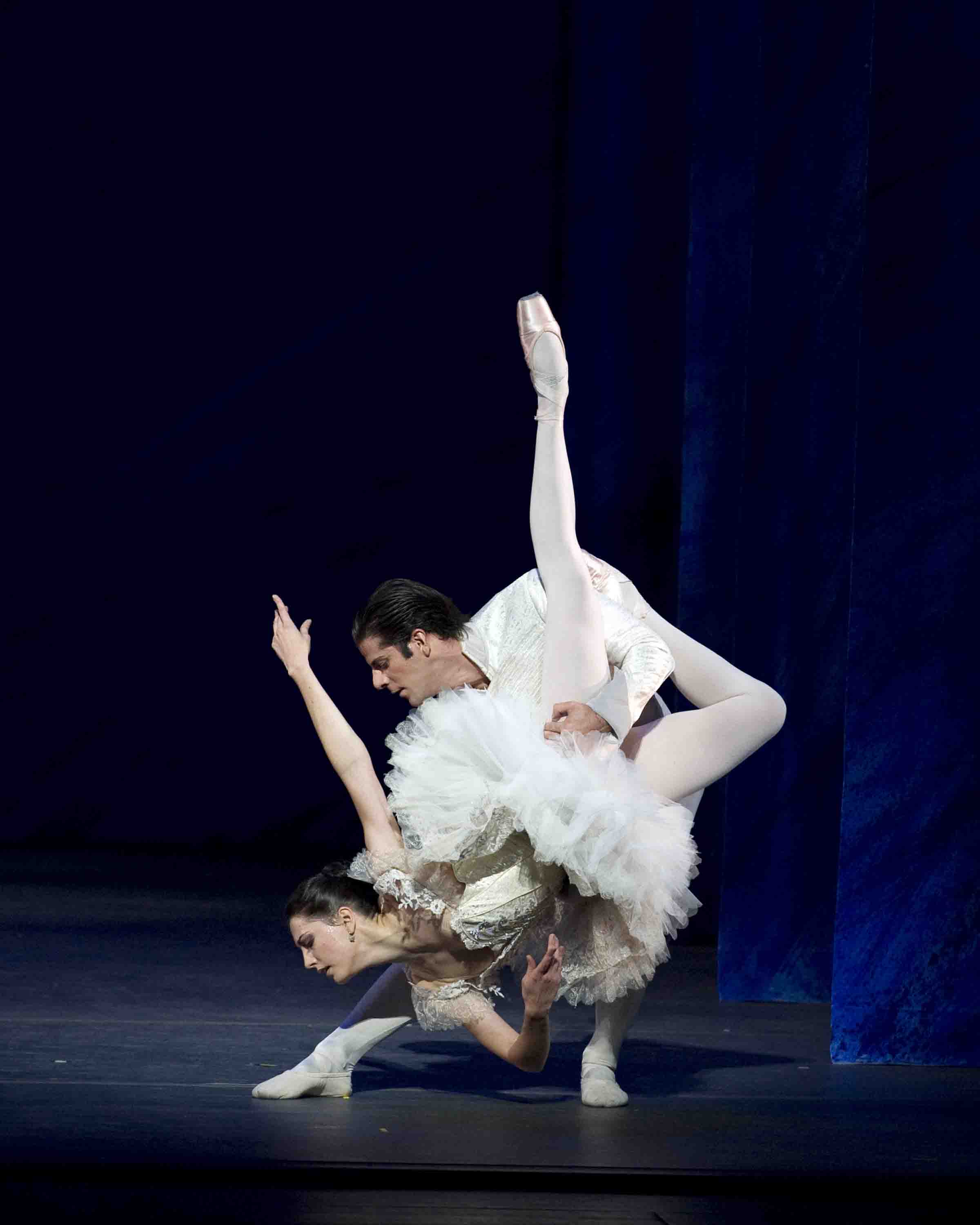Doug Varone and Dancers / Joyce Theater, NYC / March 15 – 20, 2011
Trisha Brown Dance Company / Dance Theater Workshop, NYC / March 16 – 26, 2011
Martha Graham Dance Company / Rose Theater, NYC / March 15 – 20, 2011
Doug Varone’s ambitious program-length work, Chapters From a Broken Novel, had its New York premiere at the Joyce Theater on March 15 and ran through the 20th. On opening night, though, I felt as if I were watching a culmination, rather than a birth.
In a series of informal studio showings at the 92nd Street Y, rakishly called “Stripped,” the choreographer had been presenting segments of Chapters without a proscenium stage, enhanced lighting, set design, costumes, makeup, or any other enticements that signal Theater. Indeed, before they started moving, the dancers, all fluent powerhouses, looked like war-torn waifs being held in an area called Nowhere. These shows were a hot ticket.
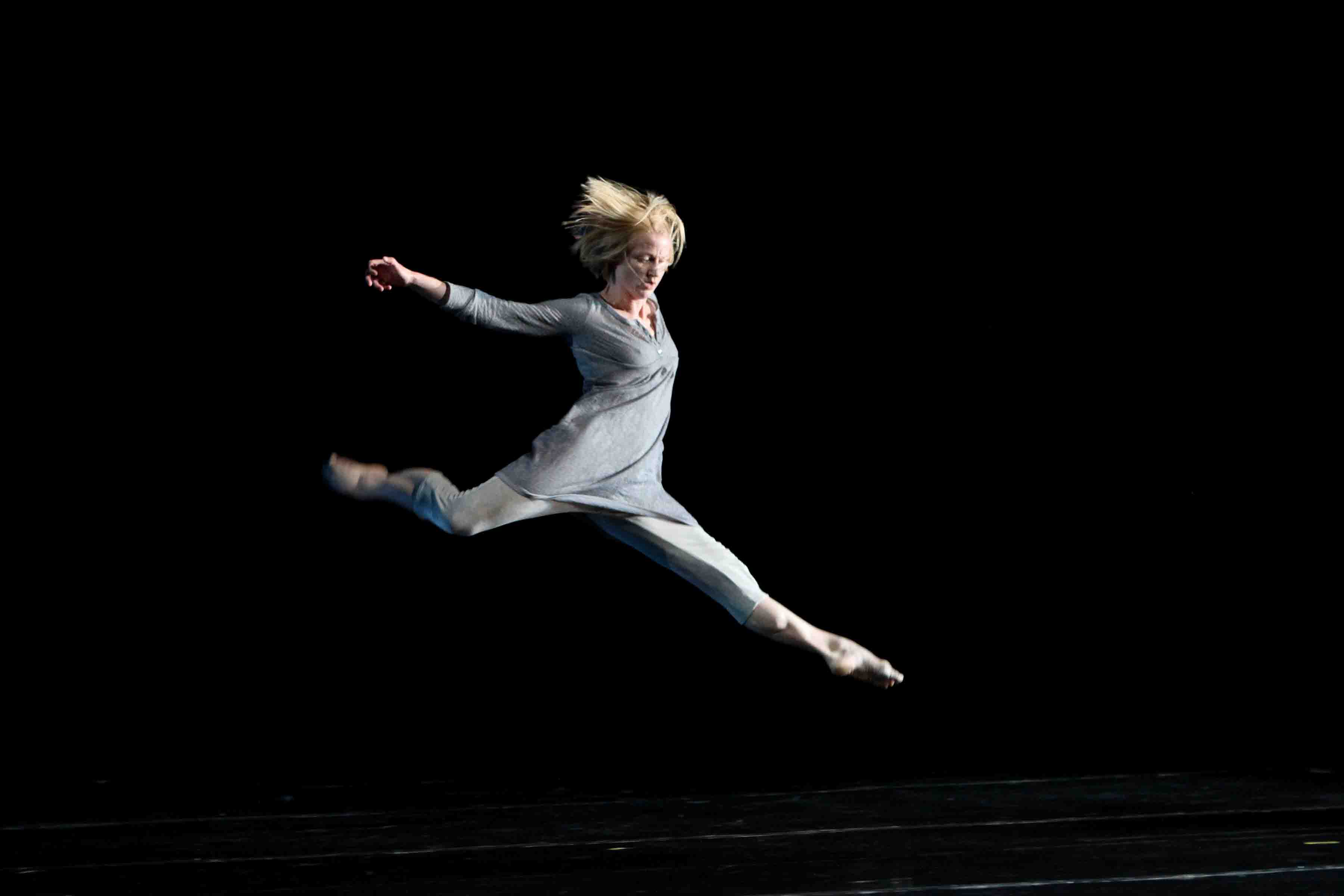
Night Flight: Doug Varone and Dancers’ Natalie Desch in Varone’s Chapters From a Broken Novel
Photo: Julie Lemberger
The formal presentation of the new work–20 self-contained, mostly semi-abstract, accounts of human experience and human feeling–delivered everything and more than the early glimpses had promised.
Beginning with the opening of the piece, then at intervals, a “chapter” has the entire cast of seven devoting itself to signature Varone movement: bodies rushing across the space, whirling as if swept up in a cyclone, pitching heedlessly to the floor, and making quick and ever-shifting contact with the other bodies in what could be taken for a melee, but is tightly choreographed. The dancers constantly weave in and out of matrixes formed by their colleagues, repeatedly exiting and reentering the space. Everything is hyper-swift, executed with full-out, unflagging energy; anything that happens looks unexpected.
Duets, trios, and quartets are something else again. They’re intense in feeling yet expressed in subdued ways, privy to private emotions, acute to the elusive changes and multiple undertones present in any relationship. Oddly enough, Varone is drawn to the concerns that preoccupied Antony Tudor.
Among the more intimate chapters I found these particularly compelling:
No. 4: Netta Yerushalmy and Ryan Corriston anatomize the relationship of a sadomasochistic couple. The terms of engagement are widely known; the fact that they’re expressed without words, subtly yet clearly, is amazing. When all is done in this push-pull duet, you know that both participants are there for a very good reason.
No. 9: Eddie Taketa and Natalie Desch kneel awkwardly, plunked down on the floor as if hinged at their joints, yet trying, dimly, to communicate their feeling for each other. When Julia Burrer and Alex Springer arrive, you realize that they are the handlers of the first couple, who are marionettes. Next you come to understand that, as in Petrushka, the marionettes have souls. And that the handlers may too.
No. 10: Taketa, grounded, turned away from the audience, shoulders hunched, rises in small, painful stages until he’s standing, body still taut and unyielding. He looks like a person well on his way toward turning into stone. This chapter is called Funeral.
No. 13: Erin Owen, the company’s perennial ingénue, who retains the beautiful gaucheness of a teenager, alternatively primps nervously and bursts into free, joyous spates of dancing, as she waits for her date. Or, perhaps, imagines one. She’s a delight.
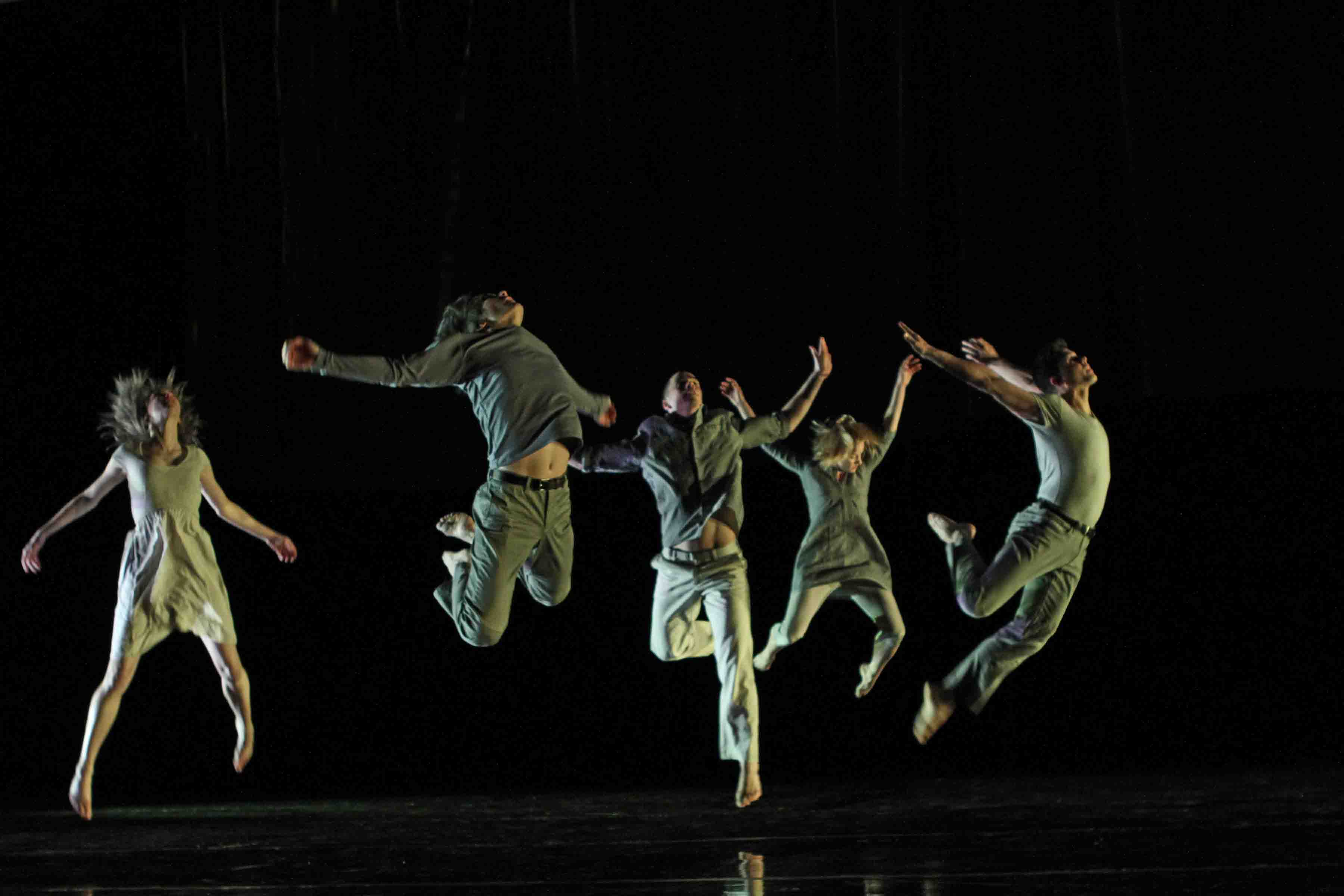
Free-fall: Erin Owen, Eddie Taketa, Ryan Corriston, Desch, and Alex Springer in Chapters From a Broken Novel
Photo: Julie Lemberger
Watching Varone’s 20 chapters run one after the other without a breathing space, let alone an intermission, is exhausting, since nearly every episode triggers you to build a backstory for it at the same time it’s taking place–until your mind is simply overloaded. Nevertheless, taken together, the 20 episodes prove what you have always–if secretly–suspected: that life is very strange. And rich. And dangerous. And occasionally ecstatic.
The score, played by its composer, David Van Tieghem, was as we’d heard it in the rehearsal studio–interesting for its quirky percussion instruments and reasonably sensitive to the various moods of the choreography. The just-right gray and white costumes, credited to Liz Prince, looked as if they’d come from the American Apparel shop down the street–simple, youthful, not in the least costly. Andrew Lieberman’s set design–two fat horizontal rollers bearing lavish amounts of pearly cloth–hovered over the dancers’ heads and served as a screen onto which the title of each chapter was projected. The proportions could use some adjusting, but it will do.
Varone has many fans but other observers have been under-impressed. “His vocabulary’s awfully limited,” they complain. Or, “His choreography isn’t really responsive to music.” There’s truth in what they say. But I am still persuaded by many of his pieces because, like Alexei Ratmansky in the classical realm, Varone has an unquenchable instinct for expressing the vagaries of the human heart.
Rooftops, in one early piece. Judson Church (celebrated for the breadth of its thinking). SoHo lofts. Museums (even perilously walking down their walls). Opera houses Stateside and abroad. You name it, Trisha Brown’s shape-shifting art is easily comfortable there.
On the most recent occasion, the Trisha Brown Dance Company was performing in a perfectly ordinary theater, one thoroughly familiar to New York dance fans. At Dance Theater Workshop, in Chelsea, Brown’s agile acolytes–though none as divinely slippery as she was in her prime–were performing the two last of four pieces created in collaboration with the maverick visual artist Robert Rauschenberg: Foray Forêt (1990) and For M.G.: The Movie (1991). Like Brown’s work throughout her career, these dances are as much about brain as brawn, and quietly iconoclastic. As is, in a simpler way, the 1979 Watermotor, danced by Neal Beasley, who is the first person to replace Brown herself in the legendary solo.
Brown’s intellect is a serendipitous mix of sharpness, wry humor, and wonder. What if . . . ? she seems to ask herself. Then, experimenting along this line, she turns the world upside down and inside out.
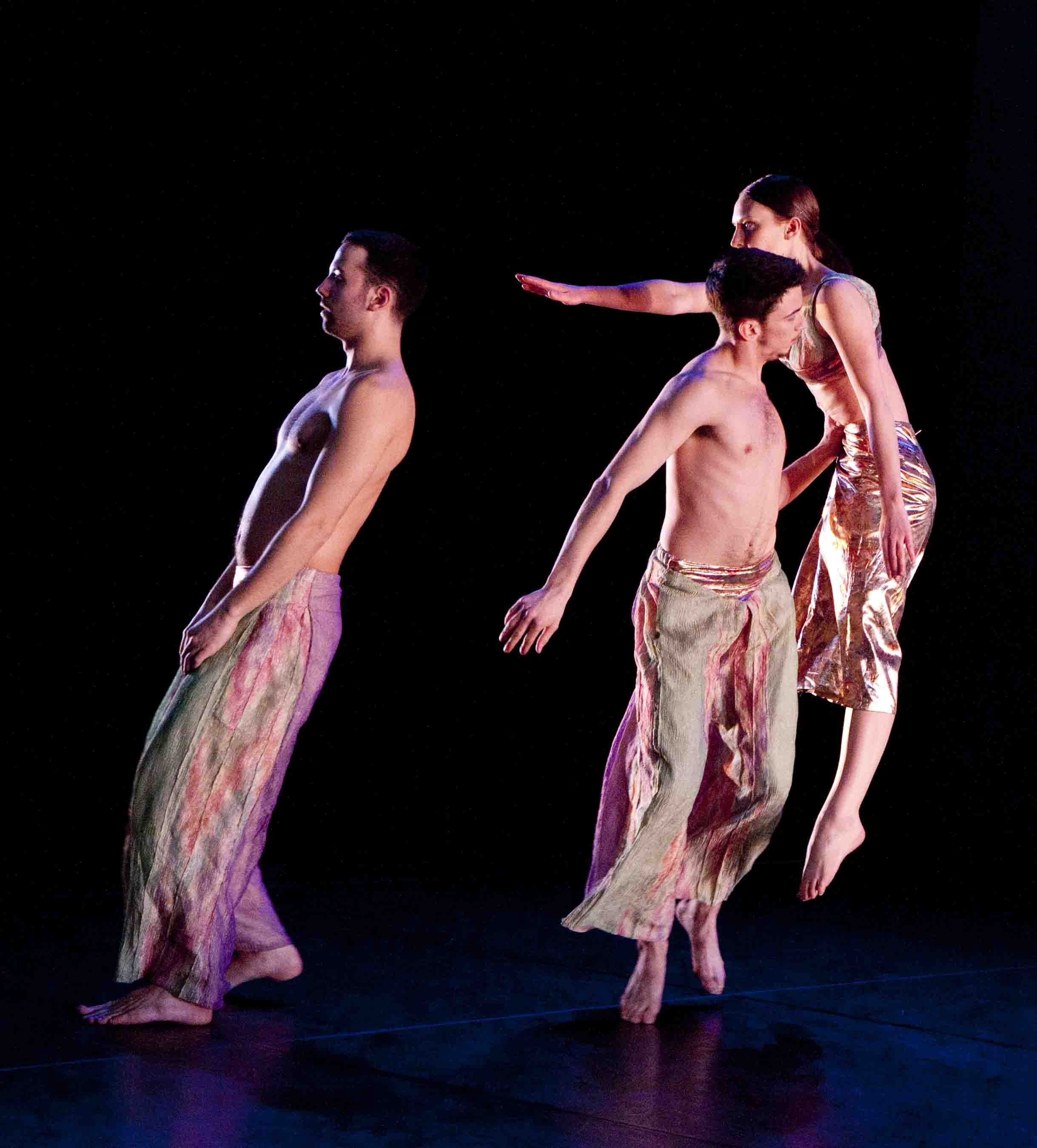
Streaming: Members of the Trisha Brown Dance Company in Foray Forêt
Photo: Yi Chun Wu
In Foray Forêt, for me the most appealing piece on the program, Rauschenberg’s costumes are the first element to suggest a locale in the Near-East. The women wear tunics or bras and slit skirts cut from cloth of gold overlaid with a scarlet pattern. Their costumes seem gaudy and heavy against the men’s: pantaloons in a lightweight fabric traced with a subdued pastel motif.
At first their dancing is lithe, even willowy at times, yet you can see that it’s exactly controlled. Sometimes they exhibit the poise of wild creatures, super-sensitive to their surroundings. High-octane movement alternates with calmer, more deliberate passages, even occasional stasis. Gestures repeat, emphasizing their importance.
The choreography shifts seamlessly back and forth between phrases of movement and specific arcane gesture such as bending over to touch fingertips to floor. These signals obviously have meaning in the context but we can’t define their message precisely because Brown, who uses mystery as a choreographic tool, never fully defines the context. The hieratic gestures remain what we would observe in a house of worship of a religion utterly foreign to us.
While one woman performs an understated solo, other dancers let just a part of their bodies protrude from the wings. Brown often sets activity at the boundary between the stage floor and the wings, animating edges of the dancing space rather than the center. In this way she suggests that the dance the audience can see continues out into the wings–and perhaps beyond–where it’s invisible to the spectators, except in their imagination.
Gradually the activity takes on an increasing air of sacred ceremony, and eventually a frail beauty of a young woman appears. She lets herself be looked at by the community we’ve been watching. Why is this figure so special? Because she has a princesse lointaine air? Because the ritual has caused her to appear? Actually, the whole dance is like a fairy tale, but without a plot, just the communal rites that conjure up the desired ideal being who represents their salvation.
Concerning the opaque title of For M.G.: The Movie, Brown told Yvonne Rainer, one of her companions in forging postmodern dance, “M.G. is Michel Guy [a French Minister of Culture]. ‘The Movie’ is a clue for the audience that I was working with the idea of trying to make a figure materialize on the stage, whole, without your seeing the mechanics of getting there.” I believe this would make a helpful program note, if only the spectators could understand how it relates to the dance they’re seeing. I can’t, at any rate.
I remember the piece as long, slow, rust-colored, and dully repetitive. A man and a woman standing motionless, their backs to the audience (he throughout, she activated late in the day). People endlessly running cross-stage in figure eights as if in training for an event that never happens. Lots of semi-entrances and exits, with dancers moving halfway into and out of the wings. A fallen body–obviously in the way–that finally regains sufficient animation to roll into the wings. Sound that couples an onstage piano with Alvin Curran intermittently playing music of his own composition with a marching band rendering familiar tunes of then and now from a distance inside and out of the theater. Fancy tech effects: strips of light fanning out on the diagonal; mists floating gently by.
Obviously, I didn’t get much out of seeing this piece; I found it unfathomable and devoid of anything that was simply pleasing or interesting to watch. I’m willing to take, say, half the blame for this.
I admired Neal Beasley’s courage and effort in taking on the now legendary Watermotor. Throughout the company’s run, DTW was screening a film of Brown dancing the brief tour de force solo, shot by Babette Mangold in the year of its creation.
Here, thanks to YouTube, is a similar capture. Start the video and forward it to 2:15.
There was Brown, all freshness, facility, and casual calm, finding equilibrium in being off-balance; cheerfully doing several things at once; and, through her unique personal logic, giving meaningful connection to the choreography’s sequence of seemingly arbitrary moves. But of course even the film was just a reproduction of the real thing. As was Beasley’s performance, full of swell intentions but more of an attempt to resurrect Brown’s rendering than to make the dance his own.
For the sake of completeness, here’s Jonathan Demme’s latter-day shoot of Brown recording an expanded solo, Accumulation with Talking plus Watermotor:
True, no one has ever hummed the decor as he left a theatrical performance, but the revolutionary sets the Japanese-American sculptor Isamu Noguchi created for Martha Graham–for the most part at the height of her powers–are as striking as the choreography and essential to it.
In its one-week engagement at the Rose Theater, the Martha Graham Dance Company twice presented a program of three works accompanied, as it were, by Noguchi’s sculptural designs: Cave of the Heart (1947), Appalachian Spring (1944), and Embattled Garden (1958), The event was part of Carnegie Hall’s Japan/NYC Festival.
Cave of the Heart is sprung from the searing myth of Medea,
a sorceress steeped in bloodshed. For Graham, Medea was heroic, because of the size of her passions and the extent of her daring. Noguchi accommodated Graham’s vision by giving the stage three stone outcroppings, which lent the otherwise empty, amorphous space a topography, and a single dazzling element that also served as metaphor.
YouTube, the desperate dance fan’s friend, presents a meaty excerpt from Cave with no dancer identifications or–for that matter–any other information. The Medea is Takako Asakawa.
Center stage is a massive dark throne for the one-woman Chorus, whose role is to witness, comment, counsel, and mourn. To the left is an irregular pile of stepping stones, on which Medea’s husband, Jason, dallies with his newly acquired trophy princess. A rough hollow oval lies to the right. Embedded in it and rising from it are undulating stalks of shimmering golden wire. They suggest both a stand of trees that might provide shelter and a cage or prison. This is Media’s home base–a private place to which she can retreat to brood on the wrongs done to her by Jason and the revenge she intends to take.
Rooted, the wires look like a pair of trees. As the story grows hotter and more terrible, Medea pulls the gleaming structure from its base and holds it against her body. She seems to wear it as a dress and then becomes a spider waiting in her web for her prey. Now she raises it high above her head and ripples her arms so that it moves and gleams–a reference to the golden dragon-driven chariot once sent to rescue her by her grandfather Helios, god of the sun. The essence of evil, Medea becomes glorious.
Appalachian Spring, charting the marriage of a young pioneer couple, is the well-nigh flawless result of a three-person collaboration among Graham, Noguchi, and the composer Aaron Copeland. Copeland borrowed the Shaker song Simple Gifts for his score and the Shaker spirit infuses Noguchi’s set. Its elements recall the exquisite simplicity and grace of Shaker furniture and provide every place a dancer in the piece needs to be without inserting a single element that’s superfluous.
YouTube provides a four-part recording of the complete Appalachian Spring with a sexagenarian Graham as the Bride, and good views of Noguchi’s set. Here’s Part 1:
There’s the frame of the house built for the Bride and the Husbandman with two steps to the porch (up and down which the Bride will roll, as she imagines the agony of childbirth); a rocking chair used first by the mature Pioneering Woman (who lovingly dispenses knowledge and comfort to the young pair) and, last thing in the piece, becomes the site from which the newly-weds look out toward their future); a rock serving as the pulpit for The Revivalist who performs the marriage ceremony yet preaches hellfire and damnation; a bench for the preacher’s Followers, a quartet of deliciously silly look-alike young women; and a roughhewn segment of the fence that separates settlement from wilderness.
Appalachian Spring is one of Graham’s greatest creations and surely her most loved. Audiences are touched by both its tough truths and its pleasing sentiments. It’s just about perfect in its evocation of time and place and the people who dwell there. But as anyone who sees the dance more than once will realize, it also has a firm architectural base. A photograph snapped at any moment in its performance will show the fine-tuned balance of placement between Noguchi’s sculptural pieces and the dancers’ positions on the stage. Indeed, the equilibrium that’s maintained while so much–in terms of event and emotion–is happening is a little miracle.
In his book A Sculptor’s World, Noguchi quotes Graham’s mordant comment in connection with Embattled Garden: “The Garden of Eden has violence, it is only idyllic now in retrospect.” The dance is a quartet for the characters who create the turbulence in Eden: Adam, Eve, Lilith (in some legends, created along with Adam and then his first wife), and, of course, the Snake. Here Noguchi gives Graham a gracefully abstract tree (of knowledge) and a large low platform that suggests the two halves of a split apple. Golden reeds sprout up from it, quivering when the dancers move among them.
Unfortunately, Embattled Garden is a relatively weak piece, and Noguchi’s design for it is more decorative than sculptural. The same might be said of the choreography, which reveals a prophetic falling off of Graham’s creative power. The movement centers on the dancers’ shifting portentously from one place on the stage to another and performing lascivious or enraged swoops of the arms and juts of the pelvis to no particular end. The Noel Coward-ish ménage à quatre is said to be amusing.
It’s a pity that the program–intended, surely, to celebrate such a dynamic artistic pairing–didn’t include Frontier, one of the most terrific solos Graham made for herself. For that early collaboration between the choreographer and the sculptor, two lengths of heavy rope and a minimalist wooden fence show how space is rooted at the place you stand in and–powered by your imagination, desire, and daring–reaches out into infinity.
But what about the dancers–the first consideration of most people in the audience. Taken together, the three pieces on the evening’s program revealed just about everything we need to know about the current members of the company. Sleek of body and doing their damnedest, they are so balletic that, if Graham peered down from Terpsichore’s heaven, she might not recognize them as her progeny.
They seem to have been coached within an inch of their lives, presumably by the troupe’s artistic director, for accuracy and force; they carry out their mission excellently–at the price of their artistic souls. While the images they implant on the air are certainly stunning freeze-frames, any connective matter between them has all but vanished. Even worse, the dancers fail to reveal their characters’ personalities and, above all, motivations. A Graham dancer needs to draw this knowledge from inside herself, from her own exploration and understanding of her role. Without this, her performance will have no humanity.
In the course of the program, I saw only one complete exception to my complaints: Miki Orihara, a veteran member of the troupe, playing Medea in Cave. I didn’t for a moment notice anything specific about her technique (such as how ferociously she carried out the daring “Cave turns”–shoot head towards floor as you thrust one leg to the sky, simultaneously whirling in place). What I saw was a woman’s jealous rage mounting into a madness verging on self-immolation. Isn’t this intensity of experience one of the chief reasons we abandon our living rooms and head for the theater?
In this piece I’ve chosen to focus on Noguchi’s designs for Graham rather than the present stagings of the Graham dances–for two reasons: First, because the sculptor’s work continues to fascinate me (I’ve written a biography for children about him–Isamu Noguchi: The Life of a Sculptor). Second, because, having seen the Graham repertory before its glory days were over, I’ve been profoundly discouraged by its subsequent decline and dismayed by the salvage operation I’ve witnessed in the last several years.
In the choreographer’s heyday, Graham’s company was a vortex of daring artistic innovation and interpersonal melodrama. It has been directed for six years now by Janet Eilber, once a principal dancer in the group. Eilber is widely–and justly–credited with saving the company’s life after years of internecine warfare and the fact that the kind of dance Graham had invented had fallen so far out of fashion as to be scorned.
Eilber’s modus operandi is to “contextualize” Graham’s work for the latter-day audience, so that an evening with the troupe can feel like Graham 101. Granted, there are viewers–reluctant to look a dance straight in the face–who crave the security of explanation. But I don’t go to dance performances to take in a lecture, not even a lecture–dem. I go to see. And feel.
Sadly, there are dark omens about the future of Graham’s legacy in the gimmicks that have been perpetrated during Eilber’s reign. Such as? Such as having minor talents create their own variations on Lamentation (Graham’s piercing solo that embodies grief) and embracing the antics of Richard Move, who imitates Graham by zeroing in on the oddities of her extravagant persona, when she herself, as her creative powers waned, had already accomplished that.
Eilber’s leadership may be the best that can be done for Martha Graham at this point, but it is not enough to make the choreographer’s finest works immortal.
© 2011 Tobi Tobias




